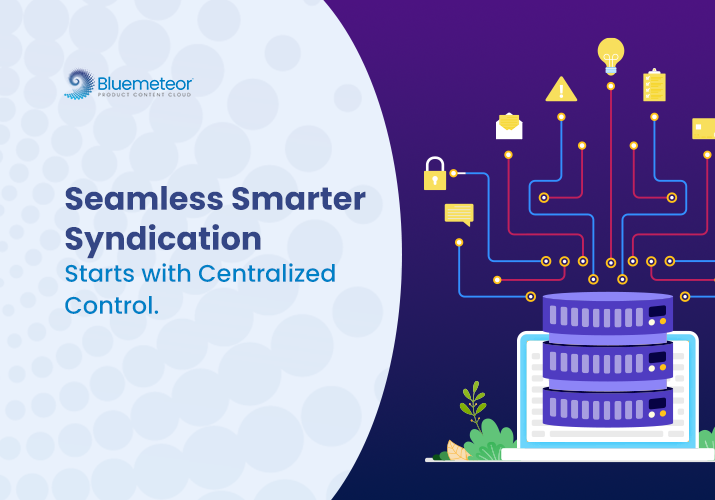7 Top-notch Strategies To Organize Product Data using Retail PIM Solutions

In today’s competitive retail landscape, how product data is organized can make or break both customer experience and operational efficiency. That’s why retailers are turning to retail PIM solutions to streamline and centralize their product information, ensuring consistency across all channels.
Maximizing Efficiency and Impact with Retail PIM Solutions:
This article explores seven advanced strategies to leverage Retail PIM solutions effectively, ensuring your product data management is not just efficient but transformative.
1. Implement a Centralized Data Repository
One of the foundational strategies in mastering product data organization is to establish a centralized data repository.
By consolidating all product information into a single, accessible location, retailers can eliminate data silos and ensure consistency across channels. Retail PIM solutions excel in this area by providing a unified platform where all product data—attributes, images, descriptions, and specifications—resides. This approach not only simplifies data management but also enhances data accuracy and reduces time spent searching for information.
Example: A leading apparel retailer implemented a Retail PIM solution to centralize product data from multiple suppliers. This allowed them to standardize product information across their e-commerce platforms, brick-and-mortar stores, and mobile apps, resulting in a significant reduction in product return rates due to inaccurate data.
2. Define and Standardize Product Attributes
To maintain consistency and clarity in product information, retailers should define and standardize product attributes. This involves establishing clear guidelines for how products are described and categorized.
Retail PIM solutions offer robust tools to enforce attribute standardization, ensuring that every product is described consistently across all touchpoints. By defining a taxonomy and attribute framework, retailers can improve searchability, enhance customer understanding, and facilitate efficient inventory management.
Example: A footwear retailer streamlined its product catalog by standardizing attributes such as size, color, material, and style categories using a Retail PIM solution. This led to improved SEO rankings, as well as increased customer satisfaction from clearer and more consistent product descriptions..
3. Utilize Automated Data Enrichment
Manual data entry and enrichment can be time-consuming and prone to errors. Retail PIM solutions leverage automation to enrich product data efficiently. Automated processes can update product details, enhance images, and even translate content for international markets. By reducing manual effort in data enrichment, retailers can accelerate time-to-market and ensure that product information remains up-to-date and relevant.
Example: An electronics retailer integrated automated data enrichment capabilities into their Retail PIM system. This allowed them to quickly update product specifications and features in response to market trends, resulting in increased sales and customer satisfaction.
4. Implement Workflow Automation
Workflow automation is crucial for optimizing product data management processes. Retail PIM solutions offer workflow management features that streamline tasks such as data approval, content publishing, and digital asset management. By automating repetitive tasks and enforcing workflow rules, retailers can reduce operational costs, improve team productivity, and maintain consistency in data updates across all channels.
Example: A furniture retailer can automate the process of updating product information across its website, partner portals, and third-party marketplaces like Amazon, eBay, and Walmart. This ensures that all platforms have consistent and accurate data, improving operational efficiency and reducing the risk of discrepancies.
5. Enhance Data Quality with Validation Rules
Maintaining data quality is essential for delivering accurate product information to customers. Retail PIM solutions enable retailers to establish validation rules that enforce data accuracy and completeness. Validation rules can flag inconsistencies, missing information, or formatting errors, ensuring that only high-quality data is published. By improving data quality, retailers can enhance customer trust, reduce return rates, and drive sales conversion.
Example: A furniture retailer implemented stringent validation rules in their Retail PIM system to ensure that product dimensions and weight were accurately listed. This reduced customer service inquiries and improved customer satisfaction.
6. Leverage Integration Capabilities
Integration with other business systems is critical for seamless data flow and operational efficiency. Retail PIM solutions offer integration capabilities with ERP systems, CRM platforms, e-commerce platforms, and more.
By integrating Retail PIM with other systems, retailers can synchronize product data across the organization, maintain consistency in pricing and inventory information, and deliver a unified customer experience across all channels.
Example: A sporting goods retailer integrated their Retail PIM solution with their e-commerce platform and ERP system. This allowed them to synchronize inventory levels in real-time, offer personalized product recommendations, and optimize pricing strategies based on market demand.
7. Empower Teams with Collaborative Tools
Effective collaboration is key to successful product data management. Retail PIM solutions provide collaborative tools that enable teams across departments—such as marketing, sales, and operations—to work together efficiently. Features like task assignments, comment threads, and shared calendars facilitate communication and decision-making, ensuring that everyone is aligned on product information updates and marketing campaigns.
Example: A consumer electronics retailer improved cross-departmental collaboration by using collaborative tools in their Retail PIM solution. This enabled marketing teams to coordinate product launches with accurate information, resulting in increased campaign effectiveness and sales.
Benefits of Using Retail PIM Solutions to Organize Product Data
- Centralized Data Management
Retail PIM solutions allow all product data to be stored in one central location, making it easier to manage, update, and distribute across channels. - Improved Data Accuracy
By consolidating product information in one system, Retail PIM solutions reduce errors and inconsistencies, ensuring accurate and up-to-date data. - Faster Time-to-Market
Streamlined workflows and automated processes enable retailers to quickly update and launch new products, reducing time-to-market for new releases. - Enhanced Customer Experience
Consistent and accurate product data across all touchpoints ensures a smooth, reliable customer journey, leading to increased trust and satisfaction. - Better Inventory Management
Integration with ERP and other systems ensures real-time synchronization of inventory levels, helping to avoid stockouts and overstocking issues. - Scalable Growth
Retail PIM solutions provide flexibility to scale, handling growing product catalogs and new sales channels without disrupting operations. - Personalized Product Recommendations
PIM data enables advanced product personalization, allowing retailers to offer tailored recommendations to customers based on their preferences and behavior.
Conclusion:
Mastering product data organization with Retail PIM solutions requires a strategic approach that integrates technology, processes, and teamwork.
By implementing these seven secret strategies—centralizing data, standardizing attributes, automating enrichment and workflows, enforcing validation rules, leveraging integrations, and empowering collaboration—retailers can unlock efficiency gains, enhance customer satisfaction, and gain a competitive edge in the market.
Bluemeteor Product Content Cloud offers retailers a centralized platform to manage and enrich product data seamlessly. By consolidating product information across various channels and ensuring data accuracy, retailers can enhance their online presence, improve customer experience, and streamline operations.
The platform facilitates efficient collaboration with suppliers, enabling faster updates and new product introductions, ultimately driving sales growth through enriched, consistent, and accessible product content across all touchpoints.




